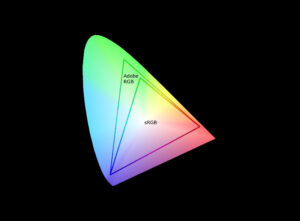One of the biggest critiques surrounding the Fujifilm GFX100RF is its lack of IBIS (In-Body Image Stabilisation)—especially considering it packs a powerful 100MP medium format sensor. But if you think the larger camera body is the reason for the missing GFX100RF IBIS, think again. In a recent discussion in Prague, Fuji insiders Thomas and Andreas spoke directly with Japanese product managers from Fujifilm, who provided a technical chart to explain the decision.
The Truth Behind GFX100RF Image Stabilisation
The chart outlines shutter speed requirements for achieving sharp images across various lenses. The key insight? Sharp shots with a 250mm lens, for example, require a shutter speed of at least 1/250s—well within handheld capability for many photographers.
- The yellow zone in the chart represents where IBIS works best.
- The purple zone requires a tripod.
- The red zone indicates lenses that need OIS (Optical Image Stabilisation).
- The gray zone (where lenses like the 35mm F4 fall) can be shot handheld, even without IBIS.
According to Fuji’s internal testing and real-world samples shared on Fuji-X-Forum.de, images can still be sharp at shutter speeds as low as 1/20s, though 1/30s is more realistic for most users. If you’re steady-handed (and not running on your seventh espresso), you might not miss IBIS at all.
Plus, the leaf shutter on the GFX100RF contributes to sharper images, introducing less vibration than traditional mechanical shutters.

Why IBIS Was Left Out of the GFX100RF
So why doesn’t the Fuji GFX100RF have IBIS? Surprisingly, the limiting factor wasn’t the camera body—it was the lens size.
Implementing GFX100RF IBIS would’ve required lenses to cover not just the full sensor area but also the additional space for sensor movement. That would have resulted in significantly larger lenses, which went against Fujifilm’s design goal of compactness for the GFX100RF system.
While a slight increase in body size might have been acceptable, the larger lenses weren’t. So the decision to skip Fujifilm GFX100RF image stabilisation was ultimately about balancing size, performance, and portability.
And remember: even with IBIS, anything that moves in your frame at a slow shutter speed will still blur—because IBIS only corrects for camera shake, not subject movement.











































































2 Responses
Very interesting indeed…!!!!
So in future iterations there will never be IBIS with this pancake lens unless they compromise and come up with a new lens which from history did not happen with the multiple iterations of x100….series , again the logic that you do not need IBIS on 100 mega pixel large sensor yet you have it on much smaller sensor with x100vi WITH F2 lens is flawed, and ridiculous, 100 mega pixel large sensor will never forgive you for any minimal hand shake, I understand moving objects will blur but to have it on x100VI and skip it on GFX100RF is a miss and definitely not hit and may turn out that way. will see how sales are but unless you are ready to utilize tripod or ISO in the 4 digits you risk image quality in less than optimal lighting conditions, in sunny 16 no problema…..!!
You make an excellent point. That massive sensor with huge resolution needs to be perfectly still to get the best from it.